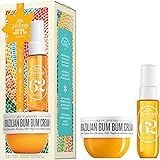Have you ever found yourself scrolling through endless online stores, searching for that perfect piece that not only looks good but also *feels* good to wear, knowing it was made ethically? It’s a common dilemma in a fast-paced world, yet the quest for truly conscious clothing is more important than ever. The video above offers a fantastic glimpse into the vibrant world of sustainable fashion from Indonesia, showcasing stunning designs born from age-old traditions and innovative eco-friendly practices. These aren’t just clothes; they are stories, crafted with intention and a deep respect for both people and the planet.
Indonesia, a country rich in cultural heritage and natural resources, stands at the forefront of the slow fashion movement. Its designers are transforming traditional craftsmanship into modern, stylish pieces that resonate with global audiences. We’re talking about garments made with a purpose, focusing on minimal environmental impact, fair labor, and timeless beauty. Let’s delve deeper into the intricate techniques and inspiring philosophies behind these remarkable Indonesian eco designers.
Unveiling Indonesian Sustainable Fashion: A Deeper Dive
The journey towards a more conscious wardrobe often starts with understanding the origins of our clothes. In the world of eco-friendly clothing, techniques like zero-waste pattern cutting are revolutionary. This method ensures that virtually no fabric is wasted during the cutting process, a stark contrast to conventional fashion manufacturing which often generates significant textile waste. Such innovation is crucial for reducing the fashion industry’s environmental footprint.
The Art of Zero-Waste Pattern Cutting
Zero-waste pattern cutting is a sophisticated design approach. Designers meticulously plan each pattern piece to fit together like a puzzle on the fabric. This method eliminates textile scraps, which typically end up in landfills. Moreover, it significantly reduces the energy and resources associated with waste disposal. Designers like Kokain champion this practice, demonstrating that sustainability does not compromise style or creativity.
Embodying Versatility: The Kokain Approach
Kokain, one of the featured Indonesian eco brands, masterfully combines linen with traditional Indonesian Jepara Tenun Troso fabrics. Their designs often feature multi-way styling options, as seen in the video. This versatility extends the life of a garment, encouraging consumers to wear items in various configurations rather than constantly buying new ones. It aligns perfectly with the ethos of slow fashion, promoting mindful consumption and creativity in dressing.
The Tapestry of Tradition: Natural Dyes and Indigenous Textiles
Beyond cutting techniques, the materials themselves tell a powerful story. Indonesian designers are preserving and innovating traditional textile methods that have existed for centuries. These include various forms of batik and tenun, often colored with breathtaking natural dyes derived from plants, minerals, and woods. This commitment to natural processes avoids the harsh chemicals common in synthetic dyeing, protecting both the environment and artisanal communities.
Weki Textile: A Symphony of Handcrafted Beauty
Weki Textile exemplifies the rich tapestry of Indonesian craftsmanship. They ingeniously blend Japanese Shibori natural dye techniques with indigenous Indonesian textiles such as Batik Tulis, Batik Cap, and Tenun Lurik. Shibori, a Japanese resist-dyeing method, creates unique patterns through folding, binding, twisting, or compressing cloth. However, when combined with the wax-resist artistry of Batik Tulis (hand-drawn batik) and Batik Cap (stamped batik), it forms truly distinctive designs. Additionally, the intricate woven patterns of Tenun Lurik add another layer of cultural depth, making each piece a wearable work of art.
Awesome’s Indigo: Simplicity Meets Sustainability
The allure of indigo natural dye is timeless, and Awesome harnesses its power to create comfortable yet chic linen tops. The indigo dyeing process, though complex and time-consuming, yields deep, vibrant blues without synthetic chemicals. Instead, it relies on fermentation and natural ingredients. This commitment to natural dyeing methods showcases a brand’s dedication to environmental responsibility. Furthermore, linen itself is a highly sustainable fabric, requiring less water and fewer pesticides than cotton, making it an excellent choice for sustainable fashion brands.
Eco-Printing & Dyeing: Nature’s Palette for Ekono Yogya
Eco-printing and eco-dyeing represent another fascinating frontier in ethical fashion. These methods directly transfer natural pigments from leaves, flowers, and barks onto fabric. The results are unique, organic patterns that are inherently tied to nature’s unpredictable beauty. Ekono Yogya, another inspiring Indonesian eco designer, masterfully employs these techniques.
The Philosophy of Slow Fashion: More Than Just Clothes
Ekono Yogya’s elegant long dresses, made using delicate eco-printing and eco-dyeing methods, are a testament to this philosophy. They utilize natural extracts from sapen, tingi, and mahogany woods to create their distinctive hues. This intricate process involves steaming or boiling fabric with natural materials, allowing the plant matter to leave its unique imprint and color. The outcome is not just a garment but a piece imbued with the essence of nature, truly reflecting the values of responsible consumption. These practices promote a deeper connection to our clothing and the environment. They encourage us to cherish what we wear, understanding the stories and sustainable efforts behind each thread. Embracing sustainable slow fashion means choosing quality over quantity and supporting the artisans and traditions that make such beauty possible.











